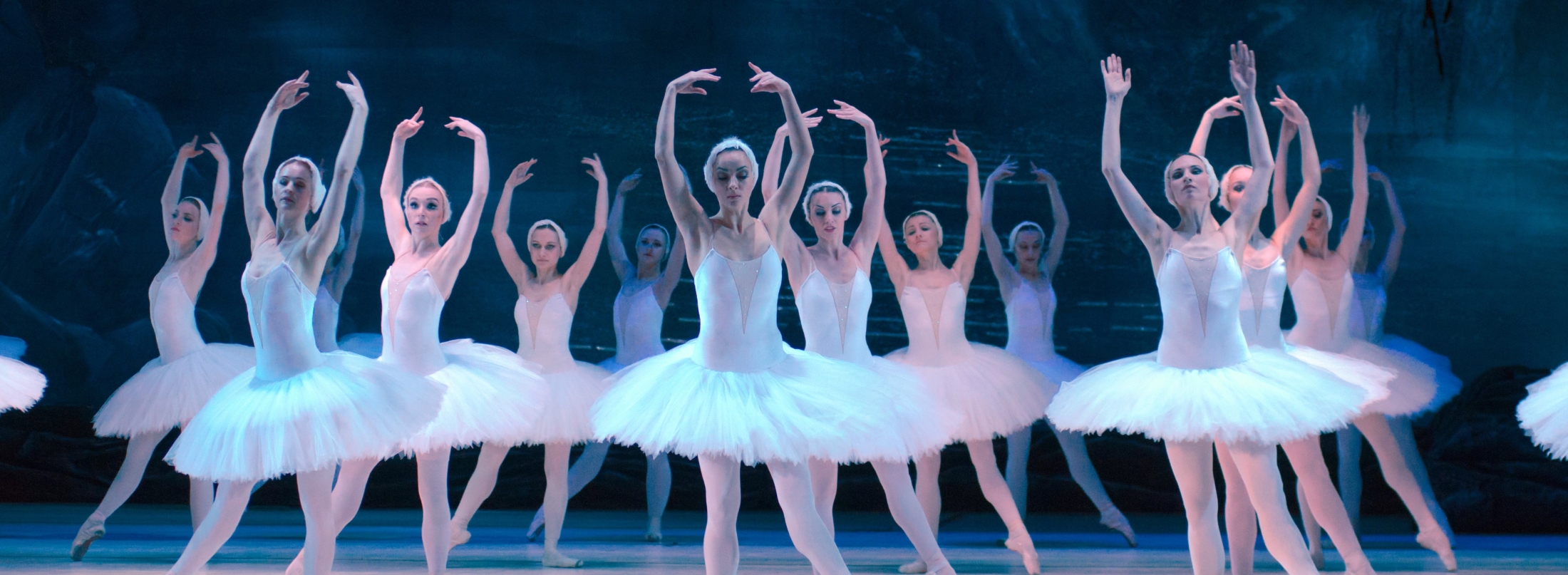
Varna International Ballet's 'Swan Lake' — a review: A truly stunning performance
Can Swan Lake still capture the hearts of modern audiences as it did the first time it was performed in 1895?
To celebrate its 75th anniversary, the Varna International Ballet has been on a grand tour of Europe and performed for the first time in its history in the UK.
World-renowned for their Varna International Ballet competition and their graceful performances not just throughout their native homeland of Bulgaria, but also throughout much of Europe too, it seemed only fitting that to celebrate the milestone of 75 years, the company should perform one of the most well-regarded ballets in history in front of British spectators for the very first time.
On February 10, Varna International Ballet performed Swan Lake at the New Wimbledon Theatre in London. Was it worth the 75 years wait? Did artistic director Daniela Dimova, choreographers Marius Petipa, Lev Ivanov and Sergey Bobrov capture the magic of Swan Lake? Read on to find out.
 New Wimbledon Theatre © Shutterstock
New Wimbledon Theatre © ShutterstockNew Wimbledon Theatre
It all starts at the New Wimbledon Theatre in the Broadway of Wimbledon London. First opened in 1910 by famed lover of the theatre J. B. Mulholland, it offers plays, operas and ballet. It became a stable of London entertainment during both World Wars, offering much needed escapism away from the horrors during that time. And after many years, it still offers that same escapism for Londoners and is part of the ostentatious London cultural experience the British capital is so well known for. Hosting Baroque and Adamesque styled features on the interior, it both dazzles with the performances and with its presentation, making it an essential part of London’s live theatre scene. It is therefore a perfect host for Swan Lake.
The Varna International Ballet’s unique take on Swan Lake
Swan Lake is a Russian Ballet first performed in Moscow at the Bolshoi Theatre in 1877. The music was written by famed Russian composer Pyotr Tchaikovsky and the story details the love story between the young prince Siegfried and the young Odette, cursed to transform into the White Swan. Through the seduction of the Black Swan Odile (played by the same soloist) the lovers are doomed. It's a timeless tale of a doomed romance.
For the Varna International Ballet’s interpretation of the classic piece, they shorten the ballet to around two hours and split it into two condensed acts. It’s a far more traditional yet streamlined version of the story which hits all the key features and plays it safe with the story which is appreciated: There have been interpretations which take risks in deviating from the source material, but sometimes miss the mark. For those that have never seen a production of Swan Lake, this is a perfect introduction to the ballet classic, telling the story faithfully and recapturing the original magic that has made the Russian piece a renowned work of art.

Renowned performers
A highlight of any ballet is the performers themselves. Katerina Petrova plays the titular character and her dark doppelganger and is a perfect fit for the role. The role is known as one of the most arduous tasks any ballerina can perform due to its dual nature and the precise movements. And since all eyes are on her, each little step or hand gesture must be perfect. Therefore, Petrova has a lot to live up to, but audiences will be delighted to know that she pulls through while also giving her roles a certain original flair of her own.
When Odette first meets Siegfried, there is a reluctance in her movements, quick retreats that really emphasise the character's isolation and fear of Siegfried. But these gradually lessen and what was really striking to note was during the beginning, there was a stiffness in her motions, especially when performing with Siegfried in close proximity. But as the two remained together longer, the movements loosened, and Petrova’s movements felt more natural. There was even much appreciated subtle Swan gestures implemented perfectly within the routine, such as a gracefully flick of the nose and certain head turns which almost mirrored perfectly that of an actual Swan. It these little movements that really help transform her into Odette and make her fit perfectly into the role.
As for her role of Odile, the Black Swan, that too was well performed and timed. Her command and powerful presence as the Black Swan would capture not only Siegfried but the audiences. She stood her ground firm and with such confidence, dominated the entire stage. But like with her White Swan persona, this too was marked with subtle additions that really emphasised Petrova’s characterisation of both these roles. In contrast to the more shy, stiff and sorrowful Odette, Odile was flashy, very loose and in various ways, very cheeky. There were moments where her subtle hand movements around Siegfried as they danced were almost seductive to watch, yet with a controlled move away, it signified her power over him. Able to touch his body and pull away, leaving Siegfried wanting more which really made the show even more compelling to watch with this power dynamic.
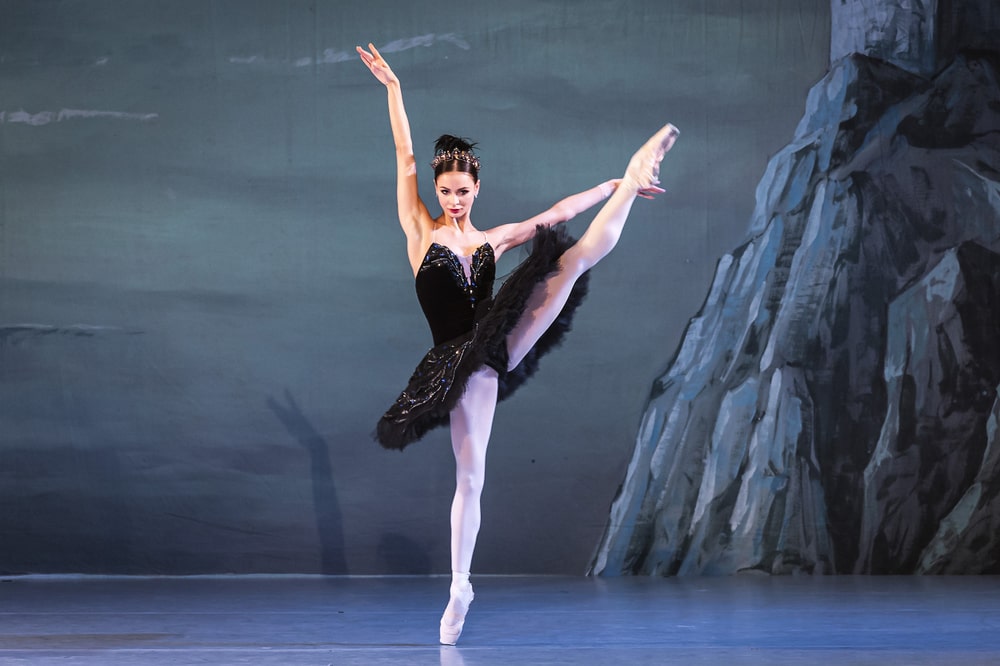
While Siegfried definitely held a higher status in the beginning, that gradually lessoned into a partnership, with both becoming reliant on each other as the moves pushed them more together. But with Odile, there were moments where she would pull away, her confident strides showed this was less out of nerves and more out of seduction. She commanded more authority over Siegfried with her charms and multiple instances of leading Siegfried in the moves.
This all culminated in Petrova’s defining moment as Odette during the end where she lay on the stage, surrounded by the Black Swan Corps de ballet and shrinking herself. The powerful imagery and the way she responds when Siegfried arrives to comfort her, her reluctance to be near him yet finally flinging herself on Siegfried in a desperate plea of love and forgiveness. It was powerful and moving and Petrova was really in her element throughout the whole show. A truly stunning performance.
Prince Siegfried, played by Tsetso Ivanov matched perfectly with Petrova in every scene. He was acrobatic, leaping around the stage and his movements, whilst not as subtle as Petrova’s did speak volumes towards his character. His graceful bows and delicate hand movements (especially in the scenes in the palace) did manage to capture that royal esteem that is worthy of a prince. His innocent eyes spoke volumes when he first meets Odette. He would make slow articulate movements as a means to impress Odette and led her perfectly into his arms as a show of the two falling in love. He managed to capture every feeling and emotion Siegfried was feeling, from love, lust, sorrow and anger with more boastful and sharp movements which offered a nice contrast with Petrova. He captured an innocent and wide eyed prince who wears his heart on his sleeve. Animated when needed for the love and some of the more extravagant palace scenes and dutiful, slow and subtle when his scenes called him to act according to his royal position or his emotions were clouded by despair and regret.
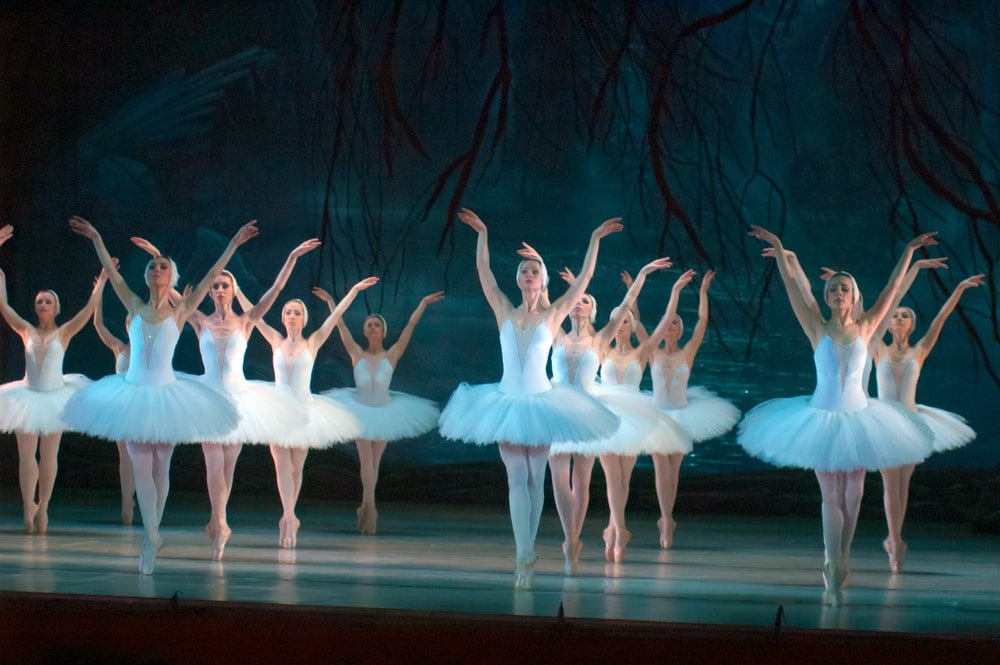
One final stand out from the main cast was Micro Andreutti as Siegfried’s friend Benno. The most animated and ostentatious of all the performers, his bold leaps and bounds across the stage, his flashy and spectacular moves were as much impressive as they were eye catching. At times he almost stole the show away from Ivanov during the latter’s more dutiful scenes. It really displayed a playful character, almost like a Mercutio role from Romeo and Juliet. It was fun, flamboyant and impressive to watch Andreutti perform these magnificent feats on stage. It would therefore be a disservice not to make special mention of him.
But that’s not to say that the other members weren’t as magnificent. One stand out scene involving the numerous potential suitors was a feast for the eyes. Each princess representing a different kingdom such as Spain, Hungary, Poland and Russian, with each wearing clothing traditionally from their native land. The music also matched their respective country such as the Spanish Flamenco which was performed with Spanish fans and in which the dance incorporated aspects of Flamenco. It offered a fun section of the ballet and was a colourful performance not just in terms of the eyes but on the ears as well.
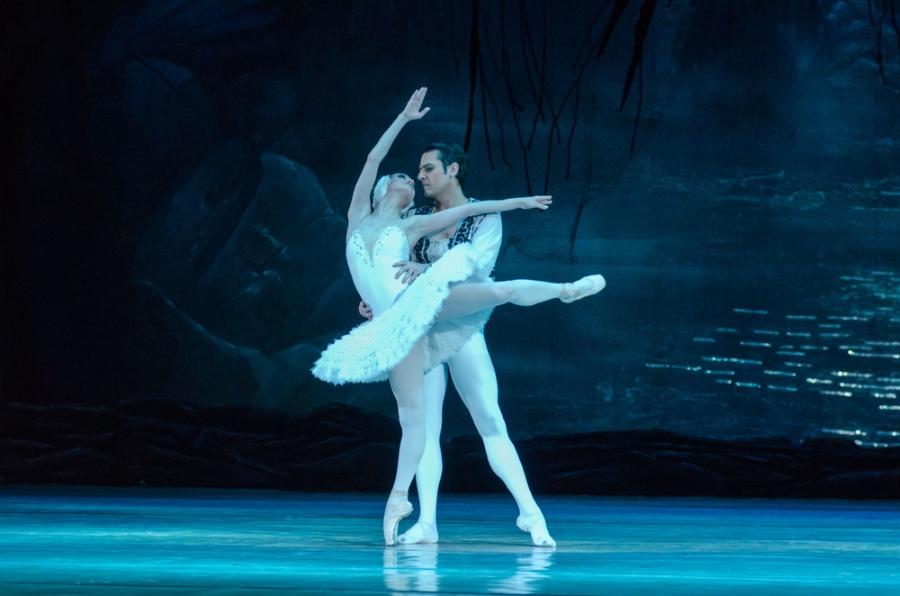
But another important aspect of Swan Lake is the Corps de ballet as the Swans. Because they are mimicking the movements of a Swan, the Corps de ballet must move in perfect synchronisation, making for a mesmerising and hypnotic display of all the Corps de ballet in White Swan outfits. In this instance, whilst they did have some very minute out of time moments, it was nothing too distracting to take away from the fabulous performance on stage. For the most part they moved in perfect synchronisation and really captured all that elegance and grace associated with a swan. It was overall sensational in terms of the performances.
An iconic moment was near the end where the Black Swans have surrounded a cowering Odette, hiding her from Siegfried who looks through the numerous conglomerations of other Black Swans to find her. The encompassing of the Black Swans hiding the White Swan perfectly symbolises the feelings of both Odette and Siegfried, having been torn apart and separated by the darkness enveloping Odette as she sinks further and further into despair.
Magical costumes
In terms of the costume and make up which was done by Asya Stoimenova, the standout was the different Princesses and their costumes which were really something magical and fun to behold. They each perfectly represented the different cultures well and added a fun extravagance to the performance.
The other costumes also fared well. Baron Rothbart, the evil magician played by Pierre Gaston wore black bird like feathers throughout most of the production besides the dance between Siegfried and Odile in which case he was dressed a black cape and mask, symbolising the darkness within.
Besides Odile and Rothbart all the characters costumes were colourful and reflected their characteristics, such as the bombastic and extravagant royal uniform, the white innocence of Odette and the black and hidden menace of Rothbart. However, that isn’t to say some of the costumes were perfect. During the second act, the Queen’s costume was perfectly fitted with glitter and really sparkled against the lighting which symbolised her power. But during the first act, parts of the costume did look a little precarious, looking as though parts of it were made of cardboard. Whilst not too distracting it was noticeable and could potentially take away from the power and prestige of the Queen. But besides that, costumes were bold, colourful, fun and perfectly incorporated.
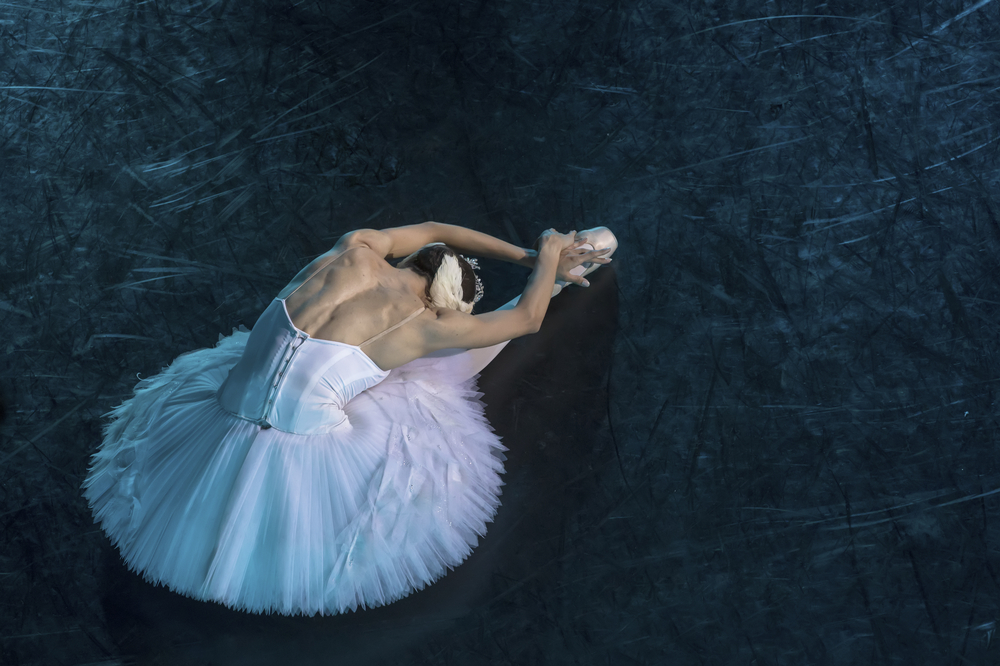
Mise-en-scène: Perfectly captured the mood
As mentioned previously, Asya Stoimenova also handled the sets. While the costumes perfectly managed to capture where the characters were, with the palace setting often accompanied by the Corps de Ballet dressed as servants or maids and the lake as swans there was some props and use of sets to accompany this. A throne for the Queen and some stools for the servants and maids to sit whilst the Princesses performed did add to the scene and worked well. The throne was much higher than the stools symbolising the Queens higher status and it was a welcome touch towards setting the scene.
Lighting also played a crucial role in setting the scene, with bright and flashy multicoloured lights used whenever at the palace to symbolise the bombastic and extravagance of royal life contrasted with the muted and dimmer lighting used whenever at the lake to recreate the feeling of being by a still lake at night by yourself. The finale where Rothbart appears and confronts Siegfried by the lake used sudden bright orange flashes to build on the tension of this climatic end, creating lightning on the stage.
This would all be rather fine and brilliantly used, but there was another aspect to this. A screen projection at the back with backgrounds to the settings such as a palace, a ballroom and a lake were used. It was merely there to explain to the audience the setting, which can be useful if costume, sets and lighting can’t do that. The problem was the sets, costume and lighting were all used perfectly to help capture this setting. It therefore felt that the projector didn’t add anything the audience didn’t already know.
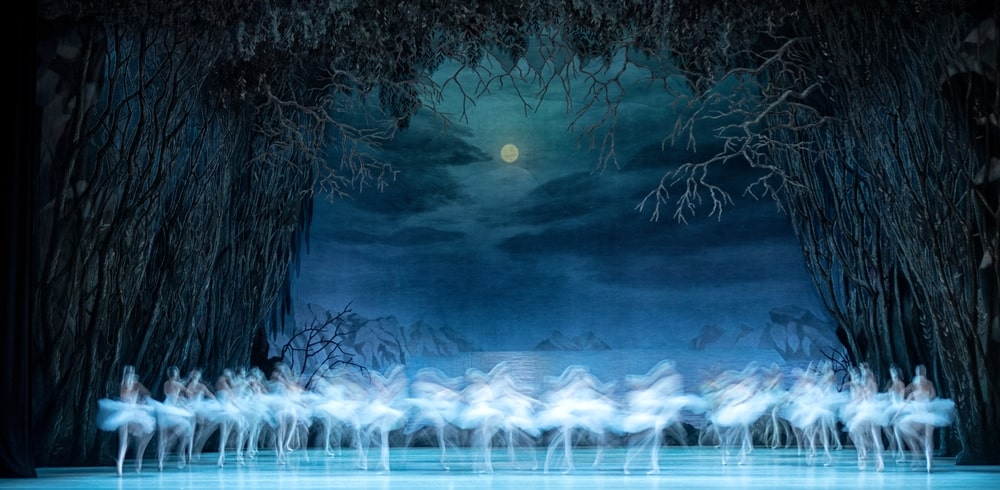
A joyous musical performance
One of Swan Lakes most defining features is the musical score accompanying it. One of Tchaikovsky’s most defining works, it has become just as iconic on it’s own as the ballet it goes alongside. Did conductor Peter Tuleshkov deliver on one of the most popular musical scores?
The answer is a resounding yes. Hitting all the key notes and delivering all the magic in all the right sections, Swan Lake just wouldn’t be Swan Lake without the music. It was such a treat to hear it performed with all its magic and wonder. Tuleshkov did a fantastic job with the score.
A wonderful, magical show
Walking out of the New Wimbledon Theatre into the cold London night after the performance was a reflective experience. Did some minor mistakes and diversions distract from the overall joyous display of peak ballet dancers performing one of the most challenging but rewarding ballets in history? Absolutely not. These were not distracting enough to ruin a brilliant production of Swan Lake.
Varna International Ballet took 75 years to get to the UK, but they sure did deliver on a promised night of entertaining ballet. They will also be performing the phenomenal Nutcracker alongside Swan Lake during their 75th Anniversary tour.
Ready to time-travel to other great performances? Don't miss our interview with the Royal Opera House’s First Artist Sae Maeda.
Photo Credits: © Shutterstock
